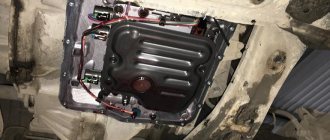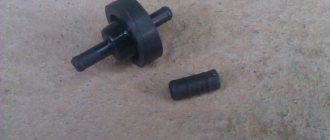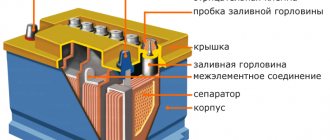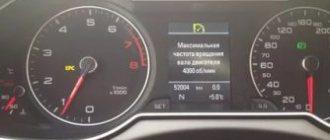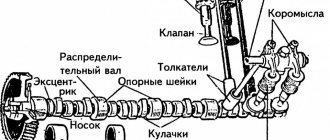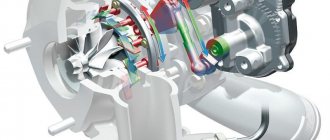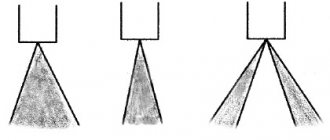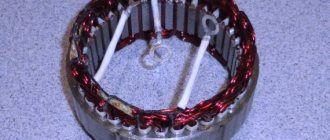RADAR5
How does radar measure speed?
It depends on the radar. The vast majority of radars we use operate on the Doppler effect: they emit an electromagnetic signal and catch its reflection from the car. If the car is moving, then the frequencies of the emitted and reflected signals do not match. Based on their difference, the radar calculates the vehicle's speed. But laser radars are actually rangefinders. They measure the distance to an object several times in a row, which changes as it moves, and then calculate the derivative of the distance with respect to time. This is how speed comes about.
Radar detector and anti-radar - what's the difference?
The difference is fundamental, although in everyday life both terms are often used indiscriminately. A radar detector is an active noise generator that disrupts the operation of a measuring instrument; its use is prohibited everywhere. A radar detector is essentially a passive radio receiver tuned to the required frequencies (however, in a number of countries it is also illegal). However, as often happens, the illiterate term “radar detector” is used much more often. We discussed this topic here.
Which radar detectors are better: direct gain or superheterodyne?
We remind you: a direct amplification receiver amplifies the directly received signal, and a superheterodyne operates only with one frequency, obtained from mixing the input signal and its own oscillator - the local oscillator. Perhaps, “supers” are better - they have a combination of high sensitivity and noise immunity in conditions of industrial interference in megacities.
What is a radar detector
A radar detector is a box stuffed with electronics that is capable of picking up signals from radars of mobile and stationary traffic police posts. As soon as the car approaches such a fixing device, the gadget warns the person behind the wheel that they should come to their senses and let off the gas.
The popularity of passive police signal receivers is growing every day, despite the fact that they are not capable of jamming radiation, but only warn of its presence on the road. And this is understandable: no one wants to part with money once again after receiving another “letter of happiness.”
RADAR2
What is hidden behind the VG-2 option mentioned in the descriptions of radar detectors?
This is an option that protects the radar detector from detection in countries where they are prohibited by law. Their own radiation can be detected by sensitive instruments at a distance of several hundred meters. When a signal from such a device is detected, the radar detector turns off its local oscillator (high-frequency generator); Naturally, he stops working “in his specialty.” The device turns on completely only after the signal in the VG-2 range disappears. In Russia today there is simply no such problem.
What frequencies do road radars operate on?
Four bands are most widespread in the world: X-band (10.525 GHz), K-band (24.15 GHz), Ka-band (35.2 GHz), La-band, also known as laser (700–1000 nm) . In Russia, only the X-, K- and La-bands are used. Outdated radars (Sokol, Berkut, etc.) operate in the X-band, and almost all modern radars operate in the K-band. Other ranges often mentioned in descriptions of radar detectors (Ka, Ku, POP, RDR, etc.) are not yet used on our roads. The Ka-band is used, in particular, by American radars, and the Ku - by European ones.
What is the actual operating range of radars?
It depends on the topography of the road, weather conditions, pointing accuracy, etc. The maximum range under favorable conditions exceeds 1 km; GOST defines the radar range as no less than 300 m. This is a guaranteed minimum. It is clear that in real conditions, measurements can be carried out both at a greater distance and at a smaller one. Structurally, the radar is designed in such a way that it either produces a reliable value of the measured speed, or does not produce any value.
Causes of radar detector failure
If the radar detector does not turn on, it is clear to the driver that the power supply or fuse has burned out. The exact cause will be determined at a specialized car service center. Implicit faults are more dangerous and can lead to a fine. Motorists often realize that the radar detector has stopped working only after being stopped by a traffic police inspector. This happens when the loudspeaker fails or the warning light LEDs burn out. Built-in devices do not function if the GPS module is faulty, the display is faulty, or the database is not updated.
The main reasons why the radar detector does not work are:
- overheating of power supplies or printed circuits (when placing the device in the sun);
- sudden changes in on-board power supply (when operating from the cigarette lighter);
- strong vibrations, shocks, falls of the device;
- factory defects in assembly or soldering of circuits;
- strong humidity (water entering the radar detector).
Only experienced radio amateurs or electronics engineers can repair a radar detector on their own. It is much easier for an ordinary car enthusiast to contact a specialized service.
RADAR6
Why were laser radars needed? Don't the “ordinary” ones cope?
The laser beam allows you to “capture” a specific car in a flow of any density, while the Doppler beam works with a wider signal beam and therefore must determine a faster target in order to clearly identify the intruder.
How do Strelki work? Why did the radar detectors sold for a long time not take them?
The Strelka system analyzes both radar and video data. The radar determines the range and speed, and the computer uses the video image to determine the lane along which the intruder is traveling. All this happens at a distance of a couple of hundred meters. When the violator approaches the camera, he is photographed at close range to record the license plate number, although the fact of the violation was established 200 meters away. The system measures at one moment in time and far away, and photographs at another moment and close. Moreover, the radar is not Doppler, but pulsed. Based on the delay time of the sent pulse, the distance to the object is determined, and after several measurements, the derivative of the distance with respect to time is calculated and the speed is obtained. In this radar, the pulse duration is about 30 nanoseconds, and the pause between pulses is slightly longer. The average power emitted by it is very small, and therefore widely used radar detectors at one time “did not see” it. However, creating such a device did not pose any technical difficulty, and therefore soon all radar detectors began to detect Strelka without problems.
Tips for drivers
When choosing a gadget, you need to understand that the main task is to warn about an approaching radar. Each manufacturer tries to position its device as the best in its class. However, there are certain characteristics to consider that will be necessary for optimal performance:
- Determining the distance to a radio signal - this function will help you determine where the radar is located.
- Functionality – you should not purchase highly sophisticated devices, just the minimum of the most necessary functions for work.
- The number of recorded signals - the wider the range, the better. Traffic police officers constantly change operating frequencies.
- Reliability – the device must pick up the radio signal as correctly as possible. More expensive models show a minimal number of false positives.
- Reliability – an important fact is to correctly determine the signal. Some cheap models can leak radio signals, which can result in hefty fines for speeding.
- Resistance to interference - cheap radar detectors can actively respond to signals from mobile phones, distracting the driver.
- Having a GPS is not required, but recommended. The module helps to better catch some signals and get attached to the area.
- When choosing a detector, pay attention to the cost. It's rare that cheap options show good performance. It's better to consider the middle segment. As practice shows, such gadgets are not much different from their more expensive counterparts.
RADAR8
Why do false alarms occur in radar detectors and how to deal with them?
There are many reasons for such alarms - automatic doors in supermarkets, microwave sensors of various security systems, industrial interference and even radar detectors of oncoming traffic! The automation of modern radar detectors is unable to 100% distinguish them from the “correct” signals - at best, some models offer an intelligent mode, which somewhat increases noise immunity at the cost of a certain decrease in sensitivity. But an experienced driver copes with this task better by ear...
Why does a laser radar detector need all-round visibility?
While radar detectors in microwave ranges receive signals from all directions (albeit in different ways), the laser beam travels in only one direction. Therefore, to receive such beams shooting from different directions, radar detectors have to be equipped with additional sensors. In any case, the efficiency of receiving the “rear” beam will be much lower, since elements of the car body will almost certainly interfere with it.
Can a radar detector receive a signal through obstacles?
Electromagnetic waves in the microwave range cannot bend around obstacles, although they can be reflected from buildings and other cars. Therefore, the same windshield wiper blades, as well as metallized tint films, can seriously impair the performance of radar detectors.
Do radars have an error?
Yes, sure. This is discussed in more detail here.
Why do we need radar detector models without GPS ?
There are almost none left. The advantages include a lower price and, as a rule, simple operation. In addition, in a number of regions, speed meters are relatively rare, and therefore a radar detector is needed “just in case,” and not as an essential item. And if so, then a model without any special bells and whistles will be quite suitable.
Can radar detectors from neighboring vehicles - oncoming and passing - affect the normal operation of my radar detector?
They can if the oncoming radar detector is made according to a superheterodyne circuit, that is, it includes a low-power generator. Your radar detector will be able to detect the radiation of such a device. This is especially noticeable in cases where your device is built according to a direct amplification receiver circuit - without any generators.
Principle of operation
Each device is adjusted to a specific operating frequency. It only works to receive signals. There is no emitter in it. Since the device does not in any way affect the operation of police instruments and does not prevent adequate recording of the behavior of road users, the authorities of a particular country may allow drivers to install such devices. Although official permission cannot be found anywhere, often the absence of a law is regarded by many as permission.
Regardless of the model, all devices are equipped with a main unit, which has its own operating mode and records the corresponding signals. The block is tuned to a specific frequency range. If a signal appears in this range, the device issues a tracking device alert.
RADAR4
Is a radarless complex (such as Avtodoriya, etc.) a step forward compared to conventional microwave technology?
In technology there are almost no steps forward - mostly in a spiral. A hundred years ago, two hoses with water were placed across the road at a distance of several tens of meters, and a policeman with a stopwatch measured the time interval between the “fountains” when a car passed through the hoses. The next version implied two cameras at a distance of 1 km and a bunch of operators who determined the numbers of the “racers” by eye. And these days, “Avtodoria” has appeared: video cameras record the vehicle as it enters and exits the measured section of the road. Having calculated the travel time, the system displays the speed at which the car covered this distance. The system itself is not new: similar systems have been used for many years in a number of European countries. It can be used on highway sections from 500 m to 10 km.
Do license plates “sealed” with a special film save you from photo/video recording complexes? Smartphones do not see anything in these cases...
Detailed materials on this topic can be found here and here.
Let us briefly note that serious measuring systems use so-called machine vision cameras, and not household “telephone” toys. They record even the minimal difference between the background and the taped-on number. And recent developments make it possible to cope with more complex tasks, such as reading completely contaminated license plates. However, we will not disclose the technical features of such devices, so as not to provoke another “arms race” between guardians of the law and its violators.
[ All about radar detectors ] [ Radar detectors: results of Zarulev tests ]
[ Why a radar detector needs GPS ] [ How to hide from speed detectors ]
Radar detectors: main questions and answers



